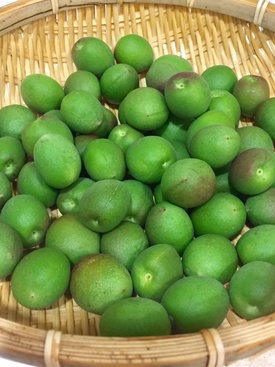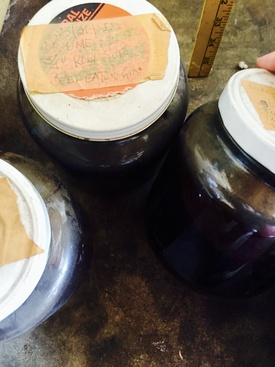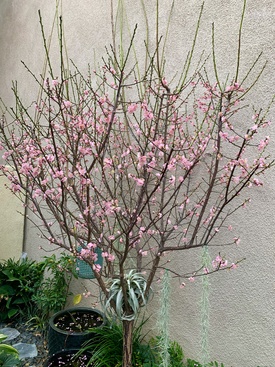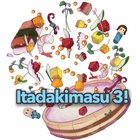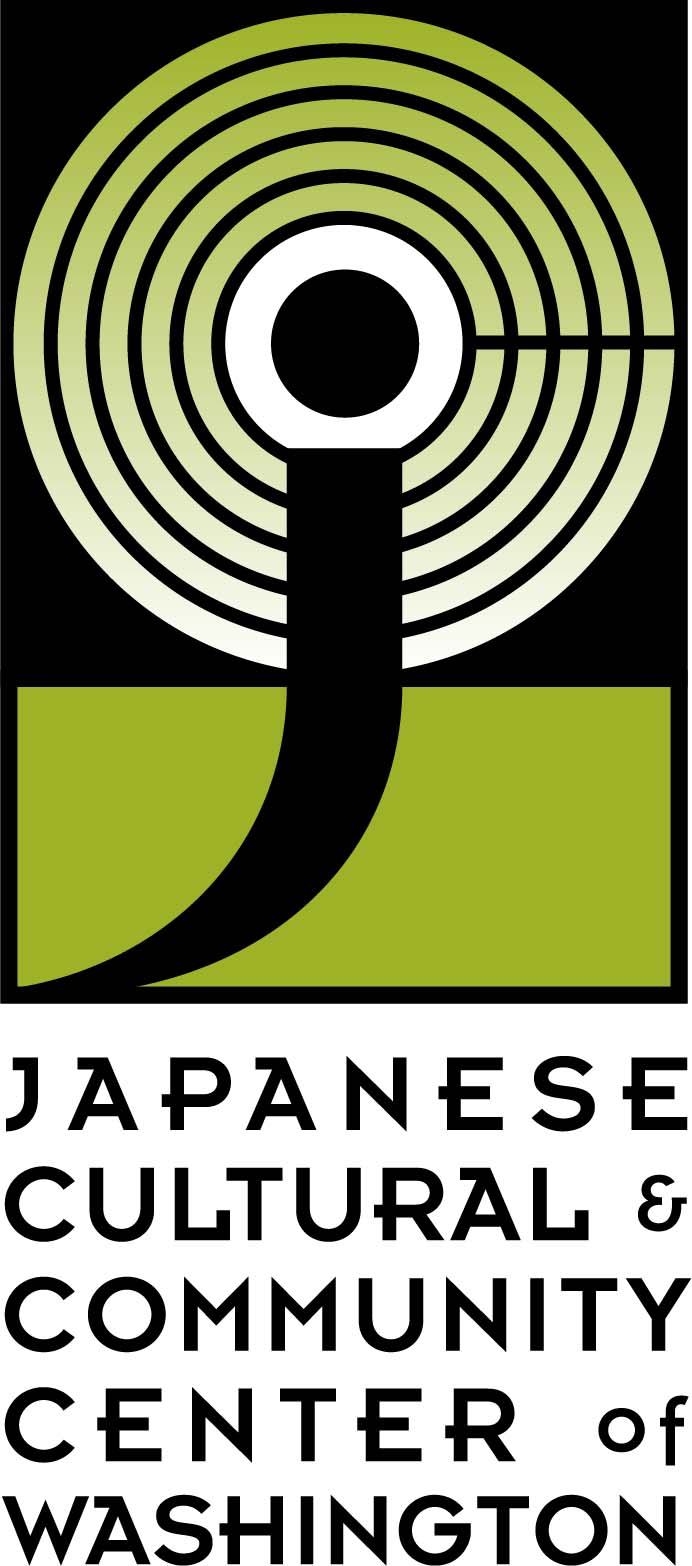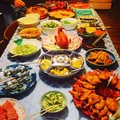Every summer I drive to the local Japanese markets to look for them—the small, green ume that are only in season a couple weeks each year. Through the cool blast of air from the store’s sliding doors, I make a beeline for the produce section feeling excited and nervous, never knowing whether the ume will actually be in stock yet, or if I’ve miss-timed my arrival by a few days or a week. Sometimes the mission is a failure and I have to try again, but when I do find them, piled up in their cardboard box, the excitement is palpable—getting there first means I get the best selection; important because ume don’t keep long once they arrive. I always feel mildly ridiculous though, picking and sorting them left and right like some kind of neurotic bird—firm, unblemished ones go into my little plastic bag; any with scratches, soft spots, or wrinkles are immediately tossed back.
Inevitably someone always comes over to ask what I’m doing. “Aren’t they sour?” “How do you eat them?”
I struggle to answer, wondering how to explain what ume are. Sometimes for simplicity I say they’re pickled, other times I say they’re for alcohol. The truth is somewhere in the middle—ume can be used for many things, but I am gathering them to make umeshu, which in my home has become a yearly summer tradition.
Umeshu is a sweet and fruity Japanese liqueur often labeled “plum wine” in English, though it is more accurately a liqueur as the ume (even themselves technically more like apricots) are steeped in, rather than fermented into, alcohol.
The roots of my family’s current umeshu tradition stemmed not from an old family recipe, but from a simple attempt to recreate it after we tried a store bought bottle and decided we liked it. At the time, it seemed like a novel idea, but when I dug deeper into my family’s past I realized that this tradition had in fact been present, if I had only bothered to look closer.
The tangible act of making umeshu—washing the ume, plucking their nubby brown stems, layering in jars with rock sugar, then pouring over with alcohol—brought back a long forgotten memory of my grandmother, standing at her kitchen counter in her trademark muumuu, washing green ume that had been brought over by a friend in bulging plastic bags.
As a child I never bothered to watch the rest of the process, but I remember later on seeing several repurposed plastic vinegar jugs sitting in a corner of her garage. Looking through their opaque white sides, I remember the numerous green blobs that I now know were ume, floating in a liquid that I now know was alcohol.
Years later after my grandmother passed away, we cleaned out a dusty wooden pantry in her garage and found remnants of this tradition that traced even further back—several glass jars of umeshu that by their date, scrawled in sharpie on fading strips of white masking tape, were over thirty years old from the time of their creation. My mother then remembered that grandpa used to make umeshu and store it in his closet; these forgotten jars, though now more a black, sticky liquid than drinkable umeshu, must have been the remnants of that tradition.
My family’s connection to umeshu may even trace back to Japan. We are from Wakayama prefecture, which in addition to being known as Japan’s “fruit kingdom,” is also particularly famous for its ume. Perhaps the knowledge of umeshu came with my great grandmother across the Pacific to Southern California, and then found its way into the form of those repurposed vinegar jugs in my grandmother’s garage. Or maybe she simply learned it later on from someone in her always-growing circle of friends and acquaintances.
However it arrived, the knowledge of umeshu was lost between my grandparent’s generation and mine. What we do now is built on new knowledge, gleaned from instruction books and the websites of strangers, and adapted to my family’s tastes over the years. What started as a one jar “experiment” seven years ago has now become a yearly production we look forward to, refined to the exact amount of sugar and the specific brands of alcohol we prefer. There is even a small ume tree that now grows in our yard in the hopes that one day it will provide enough fruit to carry on this tradition from home.
In many ways umeshu is a perfect vehicle of tradition—its production is yearly, and by nature it requires waiting; one year minimum to be drinkable, even better at two years. Even then, to reap the reward of drinking it requires remembering, a year later, that there is something you’ve started that requires returning to. Though the umeshu we make now is built only of knowledge from the present, there is meaning in knowing that its roots span generations, and the yearly act of making it keeps this cultural tradition alive.
© 2022 Cody Uyeda


